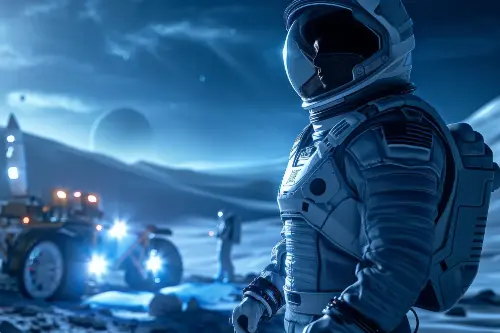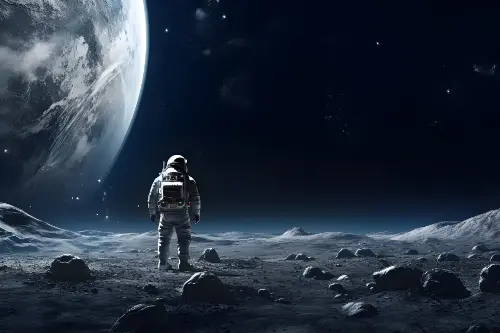The transformation from earthling to space pioneer encapsulates one of humanity's most profound evolutionary leaps. There's something undeniably captivating about astronauts – those select individuals who venture beyond our planet's confines to explore the great cosmic expanse. Yet the public fascination often glosses over the challenging realities of space life. Behind the glamour of spacesuits and the grandeur of rocket launches lies a demanding world filled with both physical and psychological hurdles.

Rigorous Selection and Training
Modern astronauts undergo an arduous selection process that starts with stringent educational requirements. Typically, they hold advanced degrees in engineering, biological science, physical science, computer science, or mathematics. This academic prowess is merely the entry ticket; the real challenge begins when a candidate is shortlisted for astronaut training.
The training regimen for astronauts is rightfully rigorous, often stretching over two years. It covers a vast range of skills from simulating spacewalks in gigantic swimming pools to learning how to handle spacecraft systems and mastering the International Space Station's (ISS) complex operations. It also demands survival training for the wilderness since landings can be unpredictable, and crew members must be prepared for any scenario.
Physical Demands in Space
To ensure readiness for space's unforgiving environment, future space pioneers are put through punishing physical training, including high G-force simulations that push bodies to their limits. They also undergo regular exposure to microgravity environments through aircraft parabolic flights, whimsically dubbed 'vomit comets' due to their stomach-churning effects.
Physically, astronauts confront a host of issues while in space. The absence of gravity means muscles and bones start to weaken, a condition known as muscle atrophy and bone demineralization. To counteract this, astronauts must engage in two hours of exercise each day while in orbit. Such rigorous physical activity also mitigates the potential cardiovascular deconditioning that occurs when living in microgravity.
There's also the factor of cosmic radiation, which is far more pronounced outside of Earth's protective magnetic field. Prolonged exposure can increase the long-term risk of cancer, which is why missions are carefully planned and lengths of stay meticulously calculated.
Psychological Challenges of Space Living
On the mental and emotional front, being an astronaut is equally taxing. The psychological challenges of isolation, confinement, and separation from loved ones can take a heavy toll. Astronauts must be adept at managing stress and dealing with the complexities of living in tight quarters with a small group of people for extended periods, often in alternating shifts that can upset sleep cycles and circadian rhythms.

Contributions to Science and Society
Despite these challenges, modern astronauts contribute enormously to our understanding of space and science. While aboard the ISS, they perform a variety of experiments that take advantage of microgravity to advance research in biomedicine, materials science, and fundamental physics. These experiments have led to breakthroughs that impact our daily lives on Earth, from the development of new medications to the creation of materials and technologies that improve our quality of life.
Narratives of Resilience and Adaptability
The personal stories of astronauts also provide stirring narratives of resilience and the human spirit. Take, for example, the ultimate marathon: astronauts like Tim Peake, who ran the equivalent of the London Marathon on a treadmill aboard the ISS, teach us the peak of human adaptability. There's also awe in hearing about the experiences of astronauts like Peggy Whitson, who broke the record for the most time in space by an American astronaut, demonstrating not only stamina but also extraordinary dedication.
The Future of Space Exploration
The dreams of interplanetary travel are inching closer to reality, with endeavors like Mars One and NASA's Artemis program, which aims to land the next man and the first woman on the Moon's surface by the mid-2020s, laying the groundwork for a manned mission to Mars later. Today's astronauts are the trailblazers preparing humanity for the next wave of exploration, setting the stage for a future where space travel may become as routine as flying between continents.
The Shift Toward Commercial Spaceflight
As commercial spaceflight companies like SpaceX and Blue Origin establish themselves with visions of space tourism and colonies beyond Earth, astronautics is set to undergo a paradigm shift. The line between astronaut and civilian is blurring, leading to a future where the skills and resilience of today's astronauts will become the foundation upon which new generations of spacefarers stand.
So, the next time we see a rocket piercing the sky, or we marvel at the footage sent back from the ISS, let's take a moment to consider the complex tapestry of challenges and triumphs behind each astronaut's journey. From the extreme physical training to the relentless pursuit of scientific discovery, there's much more to these space pioneers than meets the eye. In their stories lies a testament to human intelligence, adaptability, and spirit – qualities we all share, whether bound by gravity or not.
